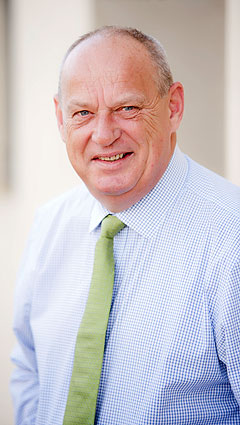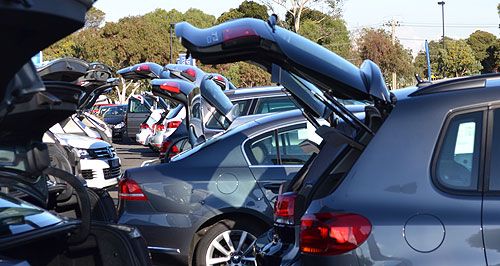Make / Model Search
News - General News - SalesDealers asked to fund born-again AADANearly new: The freshly reformed AADA wants dealers to fund the association, as it fights for better representation of legal and commercial interests. New dealer body worried by threat to F&I commissions, internet sales by car-makers17 Feb 2014 By IAN PORTER FRANCHISED new-car dealers will be asked to contribute $3 a vehicle to help fund the newly formed Australian Automotive Dealer Association (AADA) that is claimed will better represent dealers’ commercial and legal interests. The reformed AADA will set up a secretariat that will develop policies specific to dealers’ needs and vigorously present those policies to government at all levels. High on its list of priorities is the protection of dealer commissions on finance and insurance (F&I) business, which are currently under scrutiny by the Australian Securities and Investments Commission. It also wants to change traditional franchise agreements so that they recognise the impact of the internet on the traditional primary market area that is the basis of every dealer’s business. The AADA will make its first presentation on behalf of dealers at a Productivity Commission hearing in Melbourne on Wednesday, February 19, and will argue strongly against the recommendation that all restrictions be lifted on the import of used cars. Dealers were previously represented by the Australian Automobile Dealers Association, which had been formed and supported by what is now the Australian Motor Industry Federation (AMIF). The AMIF comprised the state motor trades associations like the Victorian Automobile Chamber of Commerce and represented all retail parts of the industry. This meant the AMIF had to represent both the franchised dealers and their independent service and repair competitors. “This system could not work in the best interests of franchised motor dealers,” said the chief executive of the new AADA, Patrick Tessier. “It was flawed in both its design and in its ability to truly represent the interests of Australia’s vehicle retailers.”  Left: AADA chief executive Patrick Tessier. Left: AADA chief executive Patrick Tessier.Mr Tessier will start a national promotional tour in March, holding open meetings with franchised dealers in a bid to win support for the restructured AADA. He will be accompanied by the chairman of the new AADA, Ian Field, and its policy director and currently the only paid employee, Michael Deed. It is planned that the new association will be funded with a levy of $3 a vehicle, paid by dealers who choose to be members, which could raise more than $3 million a year if everyone signs up. To get the secretariat up and running immediately, Mr Tessier will be asking dealers to chip in $265 for each dealership they currently operate. With about 1600 dealers operating around 2300 outlets, that would raise around $610,000. In a recent address to the Australian Holden Dealers Association (AHDA), Mr Tessier said the current choice of repairer debate, and the associated development of a code of conduct for data sharing, was a clear example of how the old AADA model was broken. The motor trades associations could not represent both the franchised dealers (through the old AADA) and the independents on that issue. “Why should an independent who has made no investment in infrastructure, staff training and development and image programs have access to free information at the same time a vehicle is delivered brand new to the market?” he said. “They also want access to security codes and, quite simply, they should not have them.” Mr Tessier said he believed the leakage of service business to independents had never received the attention it deserved. That was because the old AADA had been formed by the motor trades associations, which also represented the independent repairers. Another area of concern was a little-known review of finance and insurance (F&I) commissions being conducted by ASIC. “I was speaking with a Toyota dealer last week … who said any limiting on F&I revenue would destroy his business,” Mr Tessier said. “Currently, F&I commission is the vehicle sales gross profit.” Mr Tessier said ASIC was looking into two elements relating to F&I commissions. One is how the profit margin on F&I policies is constructed and the other is into an apparent discrepancy between claims ratios for general insurance (80 to 90 per cent of premium income paid in claims) and the claims ratios on insurance specific to dealers. These specific policies are for gap insurance (between what the car is worth and what you owe on the car) and consumer credit insurance (if repayments cannot be made). Mr Tessier said the ASIC review was an internal process and no external bodies were asked to attend or present. “It is clearly not understood by ASIC that any change to this profit centre will cost dealers in profitability, cost the country in employment terms, cost the consumer through less competition and make the banks and finance companies richer,” Mr Tessier said. The last major policy area Mr Tessier addressed at the AHDA meeting was that of franchise agreements between dealers and car-makers. “The final issue is the changing landscape of your franchise agreement,” he said. “Many dealers are challenged by the erosion of the PMA (primary market area) franchise territory system. “The truth is, you now have two front doors, the one on the street and the other online.” Mr Tessier said the new AADA was concerned about protecting dealers from the manufacturers retailing cars online to consumers. “By doing this, they bypass the framework that gives them brand strength and a powerful market presence.” Mr Tessier said dealers give the brands market presence by investing in the expensive dealerships that car-makers demand. However, he said the car-makers believe they give the brand presence to the dealers who still, nevertheless, have to pay for it. “The internet has changed many aspects of your business and what has not changed is the dealer franchise agreement under which you operate,” he said. “It only gives you postcode protection, and even then it’s a limited tenure.” Dealers should not ignore the “other” front door, as it threatens to devalue dealerships and the stability a PMA is supposed to provide, he said. Talking about the governance of the new AADA, Mr Tessier said the new body would not be controlled by bureaucrats, as the previous AADA had been. “The new AADA … is managed by a board of auto dealers.” Each state and territory is represented and there will be four other dealers to make a board of 12 people. In future, the board will be elected by AADA members. Mr Tessier pointed out that the national board will now include both large and small dealers whereas the previous state-level AADA boards comprised smaller dealers from smaller communities. The board will meet every two months. Mr Tessier said state dealer bodies would remain important, as they would have primary responsibility for looking after state and territory issues and providing support to dealers in areas of industrial relations and human resources.  Read more |
Click to shareGeneral News articlesResearch General News Motor industry news |












Facebook Twitter Instagram